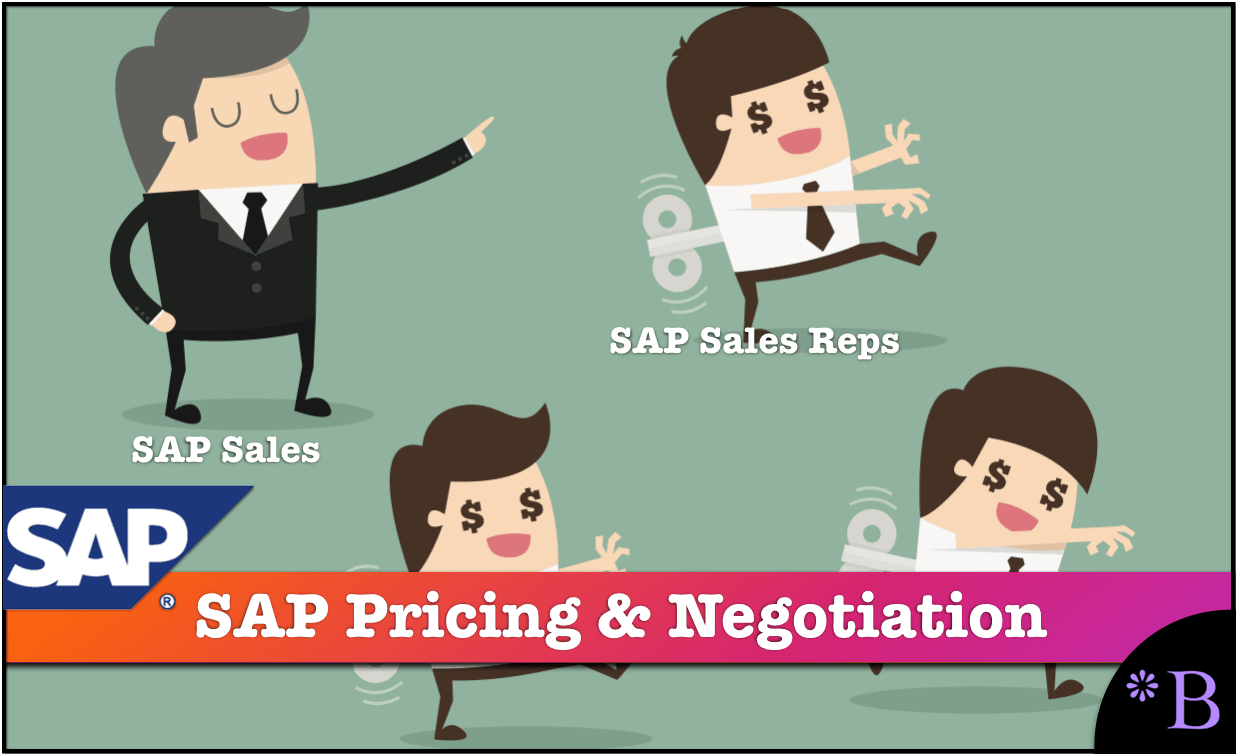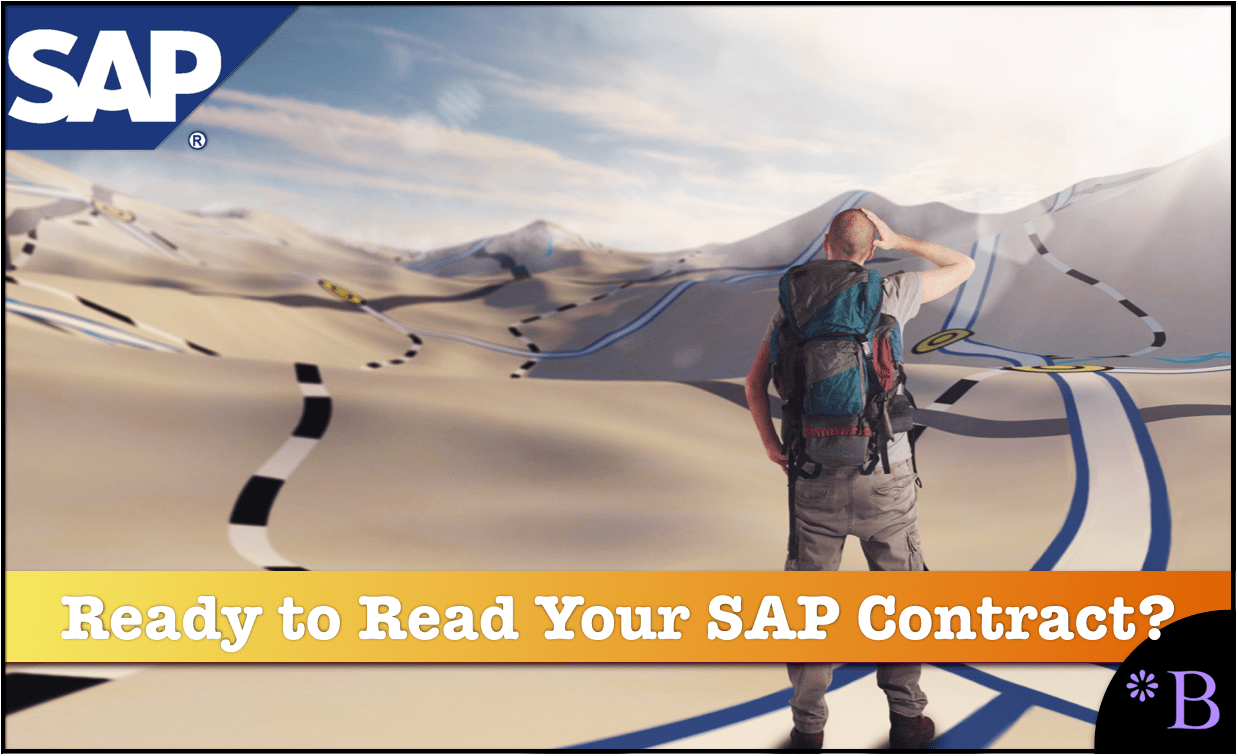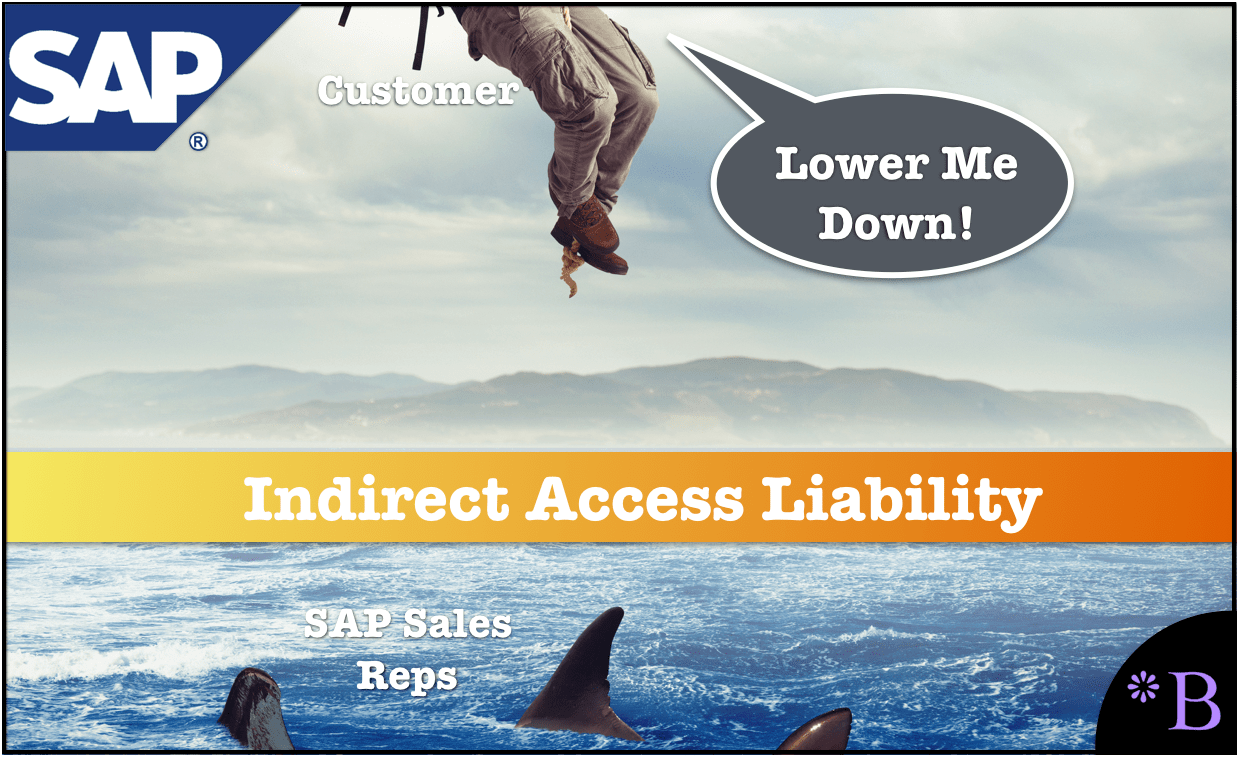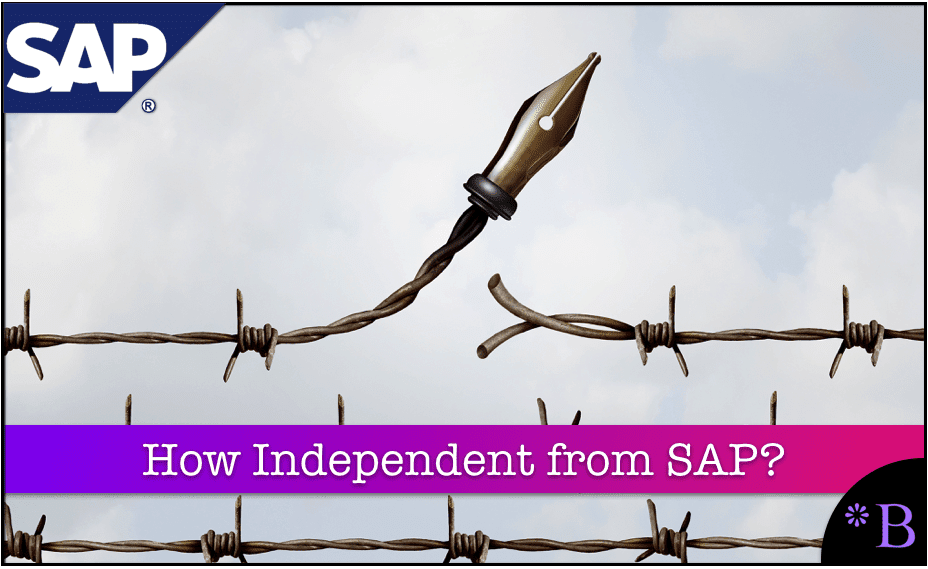How to Best Understand SAP Licensing Costs and Contract Complexity
Executive Summary
- The pricing of SAP or the price of SAP applications is kept secret, making pricing estimates challenging to obtain.
- SAP also has complex discounts, which make it impossible to know the price of SAP software accurately.

Introduction
SAP pricing is a mysterious topic hidden from public view, making purchasing from SAP a convoluted process. Companies that buy from SAP have to deal with convoluted pricing and often constantly changing statements from the SAP sales rep. SAP has several tried and true methods of confusing the account to the advantage of SAP. The vast majority of procurement departments are out of their depth when negotiating with SAP. You will learn essential details and some of the tricks of how SAP manages pricing that you can use in negotiations with SAP.
Notice of Lack of Financial Bias: We have no financial ties to SAP or any other entity mentioned in this article.
- This is published by a research entity, not some lowbrow entity that is part of the SAP ecosystem.
- Second, no one paid for this article to be written, and it is not pretending to inform you while being rigged to sell you software or consulting services. Unlike nearly every other article you will find from Google on this topic, it has had no input from any company's marketing or sales department. As you are reading this article, consider how rare this is. The vast majority of information on the Internet on SAP is provided by SAP, which is filled with false claims and sleazy consulting companies and SAP consultants who will tell any lie for personal benefit. Furthermore, SAP pays off all IT analysts -- who have the same concern for accuracy as SAP. Not one of these entities will disclose their pro-SAP financial bias to their readers.
Facts About the SAP Price List
SAP follows the on-premises model of keeping its pricing secret. When reviewing SAP’s price list, it states that the price list is public and cannot be published.
Right on the first tab of the SAP price list, it states the following:
“All rights reserved. The contents of this work are confidential and proprietary information of SAP AG. Improper and/or unauthorized reproduction in whole or in part of the information contained in this work is a violation of SAP’s proprietary rights and could cause irreparable damage. No part of this work may be reproduced or copied in whole or in part in any form or by any means (including without limitation graphic, electronic, or mechanical, including photocopying, recording, taping or information storage and retrieval systems) without the prior written permission of the publisher.”
That is false. SAP is selling a public product. Therefore the price and the pricing list cannot be protected in that manner.
The SAP Software Cost
The cost of SAP should never be confused with the price of SAP software.
The cost of SAP gets into the topic of TCO or total cost of ownership. When people say the cost of SAP, they don’t necessarily mean the TCO, but they may. TCO means making a model that accounts for the different cost categories. I have written the only book on enterprise software TCO, which can be seen here A Book on How to Best Perform Enterprise Software TCO.
In this book, I break the costs of enterprise software into:
- Acquisition Costs
- Implementation Costs
- Hardware Costs
- Maintenance Costs
So in this article, we will only be discussing SAP pricing.
The Price of SAP and Pricing SAP
SAP is priced in some different ways, and the price, of course, changes depending upon the specific application, and the number of different ways that SAP can be priced is surprising to most customers.
The different ways the price of SAP or pricing SAP can be arrived at include the following:
- By User
- By Revenue and Expenses
- By Revenues
- By Flat Fee
- By Weights: (For things like commodity and agricultural products)
- By Orders: (For things like sales orders)
- By Contracts: (For things like CRM Marketing)
- By Cores: (For things like SAP Hybris)
- By Transactions: (Also SAP Hybris)
- By Employees: (For SAP HR solutions)
- By Cost of Goods Sold: (For SAP Collaboration SNC)
- By Freight Spend: (For SAP TM)
- By Plant: (For SAP Manufacturing Integration)
- By Resources: (For SAP Manufacturing Scheduling)
- By Rental Unit: (For SAP Real Estate Management)
- By Spend Value: (For SAP Supplier Management & Ariba)
- By Product: (SAP Vehicle Management for Auto)
- By Outpatient Days: (SAP Patient Management for HC)
- By Business Partners: (SAP Tax, Benefits and Payment Processing for Public Sector)
- By Points of Delivery: (SAP Energy Data Management for Energy Utilities)
- By Learners (SAP Enterprise Learning Environment)
- By Concurrent Sessions (SAP BusObjects Knowl Acc Bundle f BI Suite (CS))
- By Virtual Users: (SAP LoadRunner by HP, 100 VU bundle)
- By Connected Systems: (ProductivityPak adapter for SAP Solution Manager)
- By GB of Memory (SAP IT Operations Analytics or SAP Predictive Analytics Suite for Full Use HANA)
- By HSVA: (SAP HANA, Runtime edition for Applications & SAP BW – Install Base)
- By Recipients: (SAP NetWeaver BeXBroadcaster)
- By LVM Instances (SAP NetWeaver Landscape Virtualization Mgmt enterprise)
- That is not the comprehensive list by Annual Subscriptions (United States National Directory (1 server)). However, it should also be recognized that many of SAP’s applications are not widely sold. Therefore, the pricing SAP, the way that is shown above, is often rarely applied.
Pricing SAP can be determined (before discount) by estimating the number of “things” the pricing is based upon. And that by itself can be challenging.
SAP Licensing Cost
SAP licensing cost refers to the price of the SAP license, which is the right to use SAP software. The SAP licensing cost is simply the more technical terms for the price of SAP. The software contract states the SAP licensing cost and the end-user licensing agreement defines it.
The SAP Price List and the SAP Software Cost
The SAP price list is not so much a list — as in an SAP price list printed out as a Word document as it is a spreadsheet that provides the SAP software cost under different conditions. The actual SAP price list (spreadsheet) is quite limited, and the people at SAP did a relatively poor job of automating it. SAP also offers an interactive price to determine the SAP software cost, but it has limitations.
The SAP price list is restricted to SAP account executives and salespeople at SAP partners. However, verifying the SAP software cost provided by SAP or an SAP partner with a third party is good. We repeatedly catch SAP sales providing false information about pricing by serving in this exact capacity for companies.
Negotiation on SAP Software Cost
The final piece of the sap price puzzle is the discount. The discount applies to all SAP products except for a few. The discount applied to a price is its subject area and differs by region and many other factors.

How to Understand The Rising Complexity of SAP Contracts
SAP talks a lot about simplification, but SAP’s contracts are becoming more sophisticated and limiting what customers can do with SAP’s software. This article will get into this little topic for which so little published information exists.
Example of the Cloud Connector
SAP has the following to say about its Cloud Connector.

An analysis by a commenter stated the following:
It is supported to run S/4 HANA on AWS as IaaS provider, the same for SCP (fka HCP). But it really seems not wanted to use more from AWS than the virtual OS. You even have to solve basics like connectivity yourself when you leave the SAP world. “Must not” – a license restriction?
Publicly Supporting Open Connections, While In Reality Offering Control?
Once again, SAP restricts the usage of its products to other SAP products. This is done even after SAP proposes that it favors open standards. It should be remembered that middleware companies never limit the usage of their adapters. However, SAP does.
This type of language is littered all through SAP’s contract documentation. It is an orientation to control things so they maximally benefit SAP. So SAP controls how the software is used. This is a growing problem and liability with using SAP. By upgrading to newer versions of SAP, the customer ends up with more restrictions than in older versions, so the restrictions are being ratcheted up.
The Licenses Trading Trap
SAP does, which seems to be magnanimous but is a trap, to allow customers to trade licenses they don’t use for licenses of products they intend to use. The reason this is a trap is that the primary reason for offering the trading of licenses is to allow sales reps to tell customers:
“Don’t worry about if the product is the best fit because you can always trade the license in the future.”
License trading is a sales technique designed to close a sale when the customer has not performed sufficient research to justify the sale. The issue is that once the license is requested to be traded, SAP controls the terms of the trade. If the license has not yet been purchased, the leverage is with the customer, but when the trade-in is requested, the leverage resides with SAP. The second problem is that SAP tries to get customers to trade licenses for things that SAP happens to sell. This means that the license trade often benefits SAP more than it benefits the customer. We covered this topic in detail in the article How to Trade Unused Licenses S/4HANA and HANA.

Indirect Access License Charges
Two vendors stand out from the rest regarding how, after license purchases, they increase liabilities for customers. The first is Oracle, which constantly audits its accounts. The second is SAP, which uses indirect access to coerce extra income from licenses. In terms of understanding indirect access, SAP has created its definition of indirect access, which we call Type 2, covered in the article SAP and Type One Versus Type Two Indirect Access. SAP claims the right to charge all customers for any non-SAP system connected to an SAP system. Media entities like Diginomica and ASUG have normalized indirect access as SAP controls them through financial relationships, but SAP’s indirect access is not based on logic. To set the stage, SAP has created a term called “unlicensed,” which they use to set the stage and legitimize indirect access claims, as we critiqued in the article Are SAP Customers Actually Under Licensed?
A major problem with SAP’s indirect access is it creates a long-term liability for SAP customers that SAP can choose to activate at any time, as we covered in the article Dealing with Surprise SAP Indirect Access License Charges.
Getting Help And The Limitations of Scope of SAP License Management Companies
While SAP license management companies show much more independence from SAP than other entities that provide advice around SAP, it should be noted that licensing management entities are not active in many SAP dimensions. They focus on the contract side. While licensing is one dimension where there is more independence, far more dimensions are uncovered by any entity providing independent advice.
And, of course, it’s not as if Deloitte. etc., are dying to provide factual information to their clients, but they are restricted by the partnership agreement they signed with SAP even if they wanted to.

The Independence of SAM/License Management Software Vendors
There is one issue within the SAP license management space. So, the license management/SAM vendors are partners with SAP. They have to be able to get their software to work with SAP. That means they have to watch how they step around SAP. If you look at the publishing around indirect access by the SAM vendors, they did not assume that SAP’s position was untenable, cheating the customer, and even illegal. We have concluded that indirect access could be managed with their software.
The licensing consulting companies rely on SAM software to see some “tendrils” of SAP reaching out to the license management companies through the software that the license management companies rely upon. When SAP has a point of leverage, they use it. And their “partnership managers” are, I think, the best in the business. For those looking for training as “muscle” in enterprise software, the SAP partnership division provides the best training in intimidation tactics.
Conclusion
SAP pricing is quite complex. SAP keeps this pricing complex and opaque, even as they talk about moving to simplified and transparent pricing because it allows them to extract the most money from their customers.
References
https://help.sap.com/viewer/cca91383641e40ffbe03bdc78f00f681/Cloud/en-US/e6c7616abb5710148cfcf3e75d96d596.html